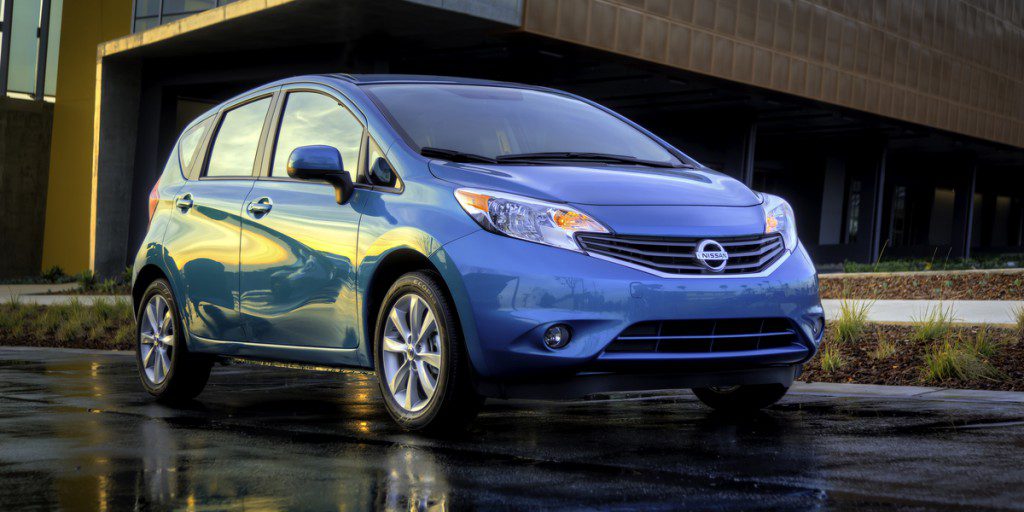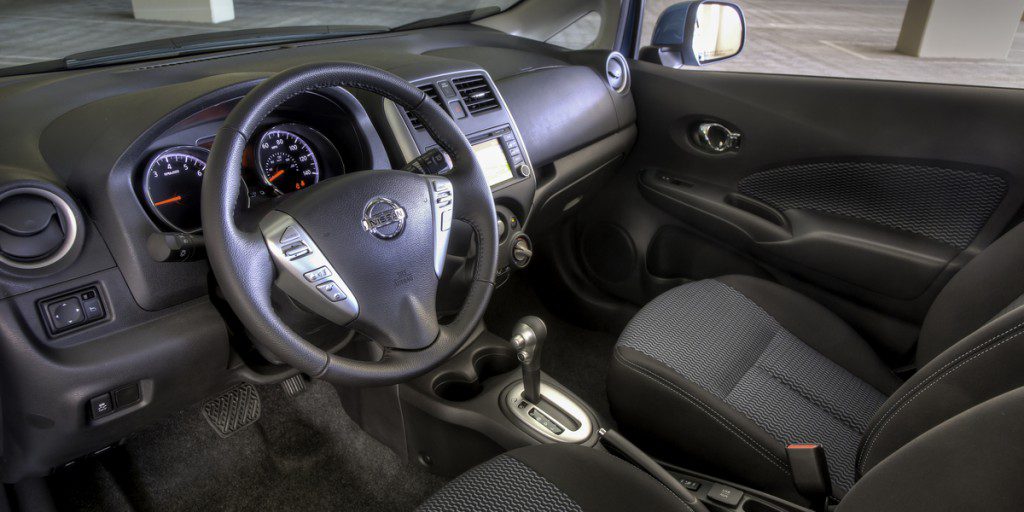| Compact car; Built in |
|
|
| Good condition price range: $8,400 – $14,600* |

2014 Nissan Versa Note

2014 Nissan Versa Note

2014 Nissan Versa Note
| Pros: |
|
| Cons: |
|
Although the base S and mid-level S Plus versions of the Versa Note are rather “stripped” by today’s standards, the top-line SV has all the expected features at prices that look good even against smaller subcompact rivals. The SV also offers some rare-for-the-class options such as Nissan’s nifty Around View 360-degree camera, along with popular connectivity features. Power can feel meager at higher speeds and interior materials don’t impress, but if interior room, cargo space, and high fuel economy are tops on your list, the Versa Note is a must-see.
Overview
The 2014 Nissan Versa Note replaced the Versa hatchback that debuted for 2007 and carried on through the end of 2012. As such, the old hatchback ended up as a significantly different car than its Versa sedan stablemate, which was redesigned for 2012. And the Versa Note continued this somewhat unusual situation. While it shared its basic front-drive platform–and part of its name–with the Versa sedan, the Versa Note was otherwise unique. Styling was different, as were such “hard points” as the windshield rake. Like its predecessor, the Versa Note was a compact 4-door hatchback, but it was 6 inches shorter and 300 pounds lighter. It was built in Mexico.
As with both the former Versa hatchback and the Versa sedan, the Versa Note was a compact car that was priced to compete with subcompact cars. Therefore, its competitors included not only other compact hatchbacks such as the Ford Focus, Mazda 3, and Kia Forte 5-door, but also subcompacts such as the Ford Fiesta, Honda Fit, and Hyundai Accent.
The Versa Note came in three trim levels: S, S Plus, and SV.
The base S came only with a 5-speed manual transmission, along with air conditioning, tilt steering wheel, split folding rear seat, power mirrors, and a digital-media player connection. S Plus added a continuously variable transmission (CVT) and cruise control. Not until the SV level did you get power windows, remote power locks, height-adjustable driver seat, and wireless cell-phone link–items that were standard in most compact competitors.
Three option packages were available for SV. The Convenience Package included a rearview camera, USB port, satellite radio, and an adjustable-height cargo floor. The SL Package further added heated front seats, keyless access and starting, and alloy wheels. The Tech package included a navigation system, Pandora Internet Radio streaming, Nissan’s Around-View camera, heated power mirrors, and hands-free text messaging.
The height-adjustable cargo floor that was included in the SV’s extra-cost Convenience Package had two settings: The top one placed it level with the folded rear seat backs and allowed for cargo bins underneath, while the lower setting allowed for taller cargo. Offered in the Tech Package was Nissan’s Around-View Camera, which gave an overhead, 360-degree view around the car. A stand-alone option was a vehicle tracking and recovery system.
Only one engine was offered: a 109-horsepower 1.6-liter 4-cylinder. The base S came only with a 5-speed manual transmission. All other models were sold only with a CVT, which behaved much like a conventional automatic. The manual-transmission S carried an EPA fuel-economy rating of 27 city, 36 highway. All other models (with the CVT) had a 31/40 rating. All used regular-grade gas.
The Versa Note came with all the expected and federally mandated safety features. The only optional safety feature was a rearview camera.
Yearly Updates
| 2014 Versa Note |
